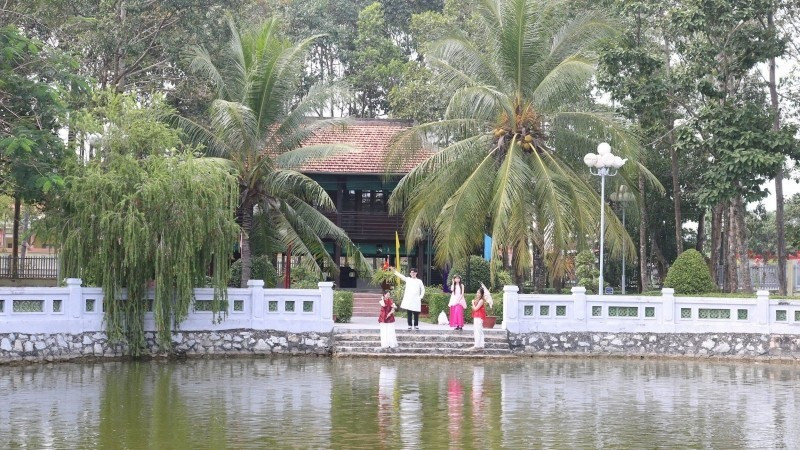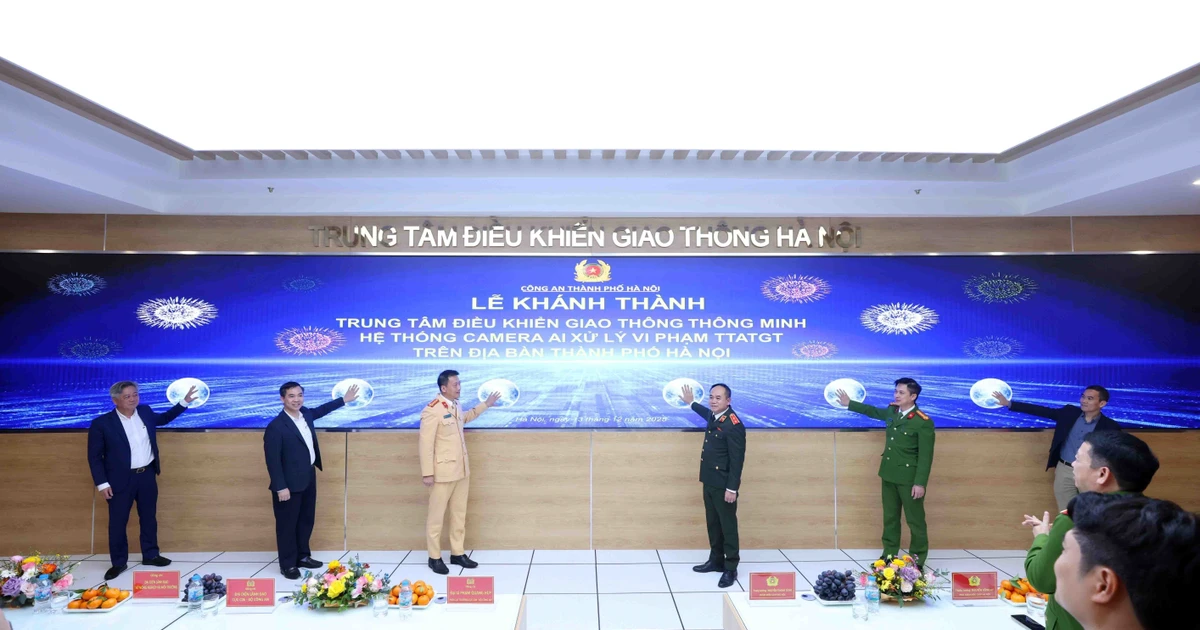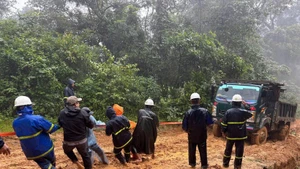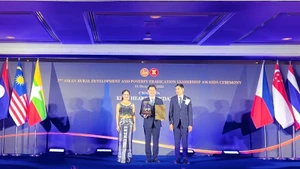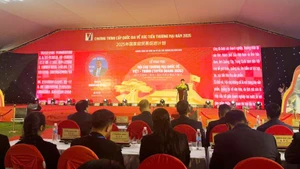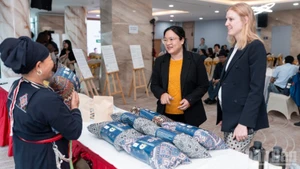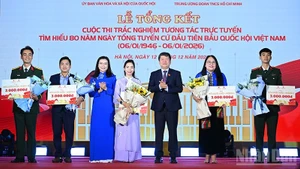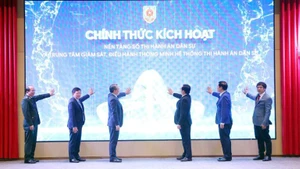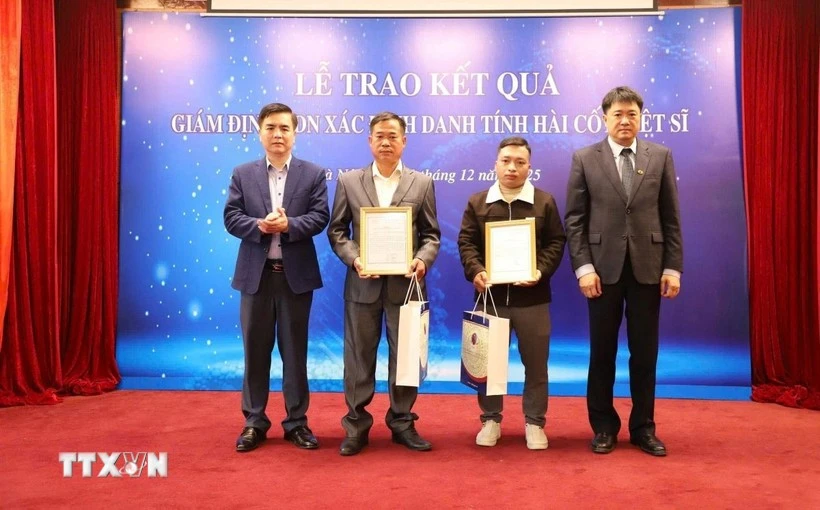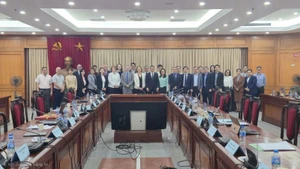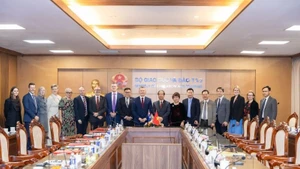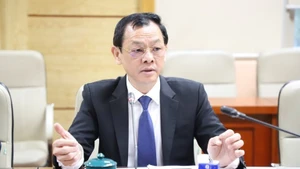The shrine to President Ho Chi Minh in Long Duc has since been recognised as a national historical and cultural site. In March 1991, when visiting the shrine, General Vo Nguyen Giap wrote: “The shrine to President Ho Chi Minh is an immortal symbol for the steadfast affection of the Southern people for him.”
A shrine built amid bombs and bullets
In September 1969, upon hearing the news of President Ho Chi Minh’s passing, while the struggle against foreign aggressors was at its fiercest, the people of Vinh Long Province held memorial ceremonies for him in grief and sorrow, vowing to turn their pain into revolutionary action.
Answering the wishes of local officials, Party members and residents, the Party Committee of Tra Vinh Town decided to begin construction of the shrine in Vinh Hoi Hamlet, Long Duc Commune (now Long Duc Ward), on March 10, 1970. At that time, Vinh Hoi Hamlet was a contested area between the revolutionaries and the enemy, just 4 kilometres from the enemy’s command centre and about 1.5 kilometres from a fortified US military base with a full airfield and combat aircraft.
Defying enemy bombardment, local residents resolved to complete the shrine by working at night to avoid planes and artillery. Local guerrilla forces built fortifications, dug trenches, and planted bamboo spikes every evening, ready to repel sudden attacks.
On October 26, 1971, the shrine to President Ho Chi Minh was inaugurated. It became a source of pride for the armed forces and people of Long Duc. Within a week, thousands of visitors from near and far came to pay their respects, expressing profound affection for Uncle Ho.
The late painter Phong Ba, who created the portrait of President Ho Chi Minh displayed in the shrine, once shared with emotion: “I burst into tears when entrusted with painting President Ho Chi Minh’s portrait. I vowed to portray him beautifully so that he would live forever in the hearts of the people of Long Duc.”
On March 10, 1971, learning of the shrine, the enemy launched a large-scale sweep into the area, supported by artillery, aircraft and warships. Local guerrillas fought bravely to defend the shrine, but overwhelmed by superior firepower, the enemy eventually burned it down with flamethrowers.
Undaunted by the destruction, the people and armed forces of Long Duc were determined to rebuild it. On February 14, 1972, the shrine was inaugurated for the second time. For over five years, they defended it against dozens of sweeps and hundreds of artillery bombardments. Many officials, soldiers and civilians laid down their lives to protect this sacred place out of boundless reverence for President Ho Chi Minh.
The Long Duc women’s guerrilla unit, under the command of Phan Thi Nho, fought valiantly and achieved many victories while safeguarding the shrine. During the historic Ho Chi Minh Campaign, many provincial units offered incense there before setting off, swearing an oath to sacrifice their lives so that the motherland might live.

Spreading noble deeds
In September 1989, the shrine to President Ho Chi Minh in Long Duc was recognised as a national historical and cultural site. Since then, it has undergone several restorations and expansions. Today, the site covers over 4.5 hectares, featuring a main shrine, a traditional house, exhibition spaces, landscaped gardens, a fishpond, and a stilt house modelled on President Ho Chi Minh’s original residence in Ha Noi.
To express their respect, many local families also established household altars to President Ho Chi Minh. These include the families of Cao Van Dang in Can Long Commune, Le Huu Duc, and Le Thi Tiem in Long Duc, among others. The family of Le Quang Trang in Dai An Hamlet, Tan An Commune, even built a shrine in his honour. Each year, on September 2, they hold a memorial ceremony with simple yet solemn offerings. By custom, villagers join the family to prepare and cook offerings, paying heartfelt tribute to the beloved leader of the nation.
The cultural and historical values of the shrine, along with the practice of studying and following Ho Chi Minh’s thought, morality and style, have inspired many exemplary individuals and groups in the province.
A notable example is Nguyen Thi Kha, born in 1955, a former National Assembly deputy and now active in the Party cell of Giong Chua Hamlet, Binh Phu Commune. Inspired by President Ho Chi Minh’s love for the people, she felt it was her responsibility to care for their wellbeing and support them in times of hardships. Each month, she sets aside four million VND from her pension to buy rice and essential goods for seven poor households and elderly people living alone in the commune. Her gesture has nurtured a spirit of mutual support within the community and inspired local officials and Party members.
For many years, Venerable Thach Ray, the abbot of a Khmer Buddhist temple in Ba So Hamlet, Nhi Truong Commune, has run an initiative to support the poor. Together with the temple’s management board, he mobilises organisations and individuals to donate rice, which is distributed to needy families on the first and 30th days of each lunar month. The temple also allocates part of offerings from Buddhists to buy gifts for the poor. To date, it has distributed more than four tonnes of rice to hundreds of disadvantaged households.
The simple yet humane acts of Nguyen Thi Kha, Venerable Thach Ray, and the efforts of local authorities in supporting the poor and elderly embody the spirit of the nationwide emulation movement: joining hands for the poor and leaving no one behind.
